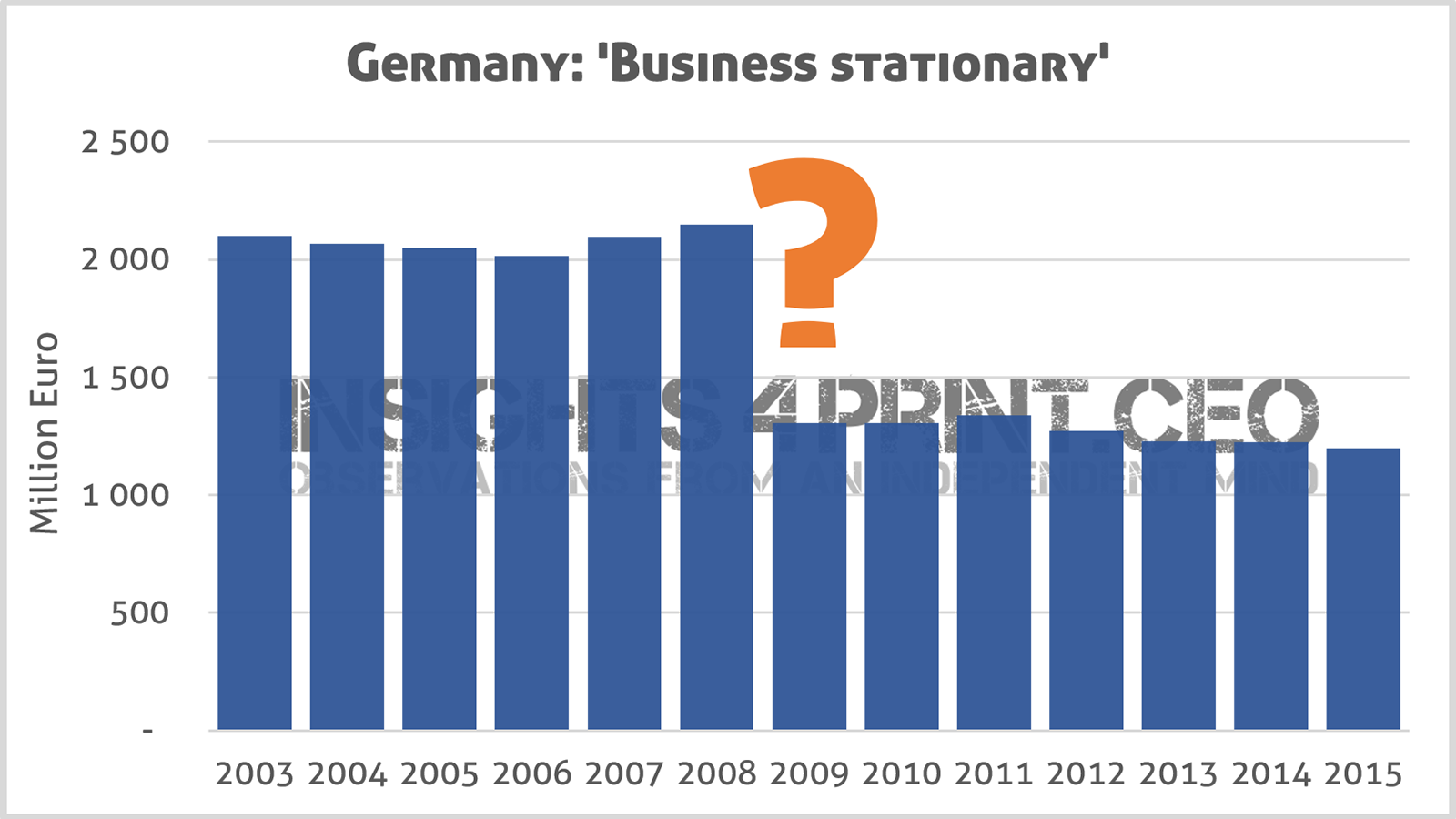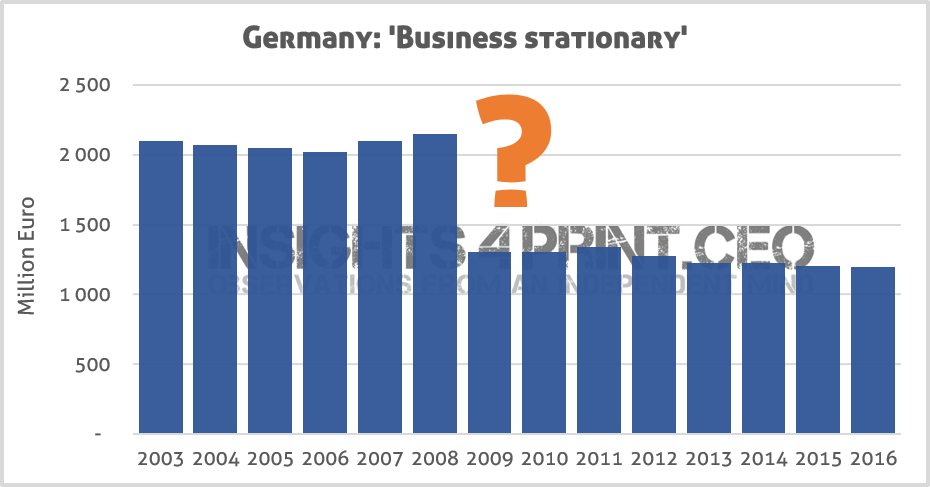
It might seem a trivial question: what happened with business cards in Germany in 2009? But there – probably – is a strong underlying truth, one that you should take into account in your business.
CONTENTS: Love/hate | What happened between 2008 and 2009? | Think 2008, 2009 | Why is this important?
I have a love/hate relation with statistics. Seeing a large amount of figures just gives me the creeps and makes me feel uncomfortable, at first at least. I need to be persistent because I do love long term statistics: they can provide very valuable information and insights. But you need really long term statistics, not just two or three consecutive years. For a solid base for determining trends, you really need five or many more years.
A country that provides very good statistics is Germany. And the German printing industry association, BVDM, publishes a nice overview every year. I’ve used these figures to show trends and evolutions for multiple projects in the past. And there is one that always amazed me: the evolution of ‘business stationary’ (e.g. business cards). Let’s take a look at the turnover of business stationary from 2003 to 2015.

What happened between 2008 and 2009?
You can see it immediately: the big change between 2008 and 2009. That’s a nearly 40% decline! But the following years, the changes were rather limited.
And also: most other categories had a decline, but not of the same magnitude, as shown in the table below. So what happened???

I can see a few explanations. One is a ‘technical’ one: did the content of that category change? It’s possible, but not that likely. It doesn’t happen that often that governments change the composition of their statistics, because of the huge consequences of such a decision. And also: if there was a shift between categories, that should be reflected in another category, which is not the case. So we need an alternative explanation.
Could it be the influence of digital? I’m not sure about that. I think the influence of digital in this category is (much) less than in e.g. magazines, newspapers and advertising/catalogs. And if this was due to the shift towards digital, I suppose we would have seen a (larger) steady decline in the years after 2009.
Think 2008, 2009
So let’s go back to 2008 and 2009. What do you remember? Probably the economic crisis that hit every country and every industry. Meaning that companies had to cut costs to survive.
But there was also another important evolution, specifically in the printing industry: the growth of web-to-print. And, if you ask me, that is what is behind this nearly 40% decline. Companies had to cut costs, e.g. on printing, and they started to discover that there were much cheaper providers than their trusted printer for their regular small print jobs, the ‘business stationary’ category. So they tried it, the discount was significant. And they were satisfied… So they had no reason to go back to their old printer. And that’s – in my opinion – what we see in these statistics: the strong shift to online printing for ‘small’ jobs. And this is also reflected in the growth figures from online printing companies in Germany during that period.
Why is this important?
We humans are creatures of habit. And it takes special effort to change those habits, but once new habits replaced old habits, it’s very hard to turn them back. In the case of business stationary: for a long time, companies went to their trusted printer. But when the economic conditions forced them to cut costs, they went for the cheaper option. Which proved as reliable as the old one, preventing them to turn back. Bringing customers who left back to your company is very, very hard. Make sure they don’t have a reason to leave in the first place!
PS: if you have another theory for the decline, please share it in the comment section!





Be the first to comment